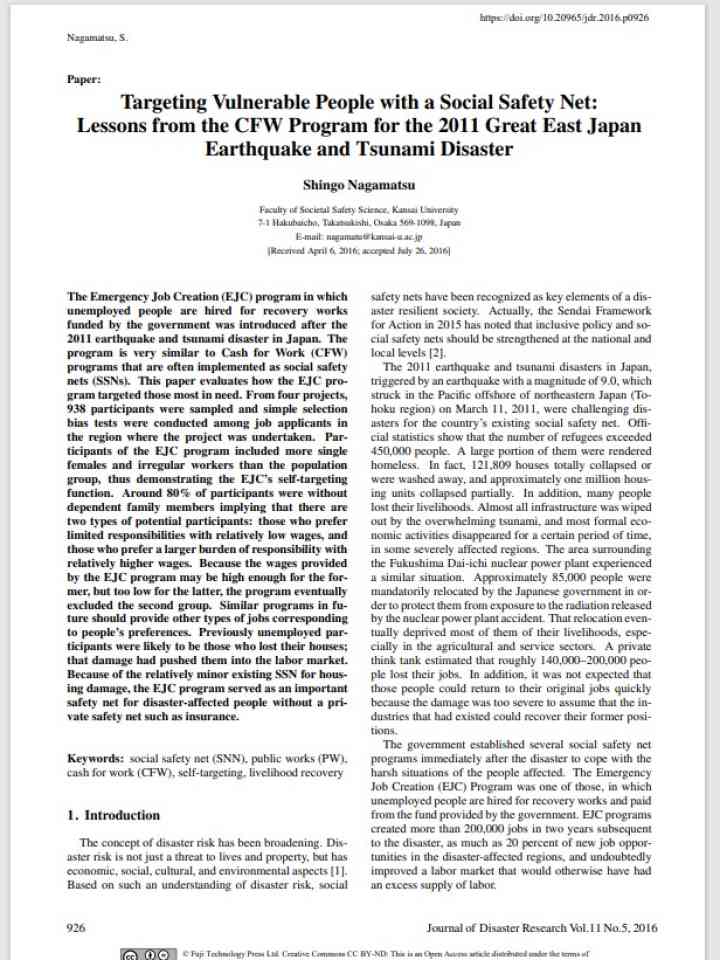Targeting vulnerable people with a social safety net: Lessons from the CFW program for the 2011 Great East Japan Earthquake and Tsunami disaster
The Emergency Job Creation (EJC) program, introduced after the 2011 earthquake and tsunami disaster in Japan, hires unemployed individuals for recovery works funded by the government, mirroring the approach of Cash for Work (CFW) programs often implemented as social safety nets (SSNs). This paper evaluates the EJC program's effectiveness in targeting those most in need. From four projects, 938 participants were sampled, and simple selection bias tests were conducted among job applicants in the region where the project was undertaken. The findings reveal that participants of the EJC program included more single females and irregular workers than the population group, thereby demonstrating the EJC’s self-targeting function.
Around 80% of participants did not have dependent family members. This implies that there are two types of potential participants: those who prefer limited responsibilities with relatively low wages, and those who prefer a larger burden of responsibility with relatively higher wages. Because the wages provided by the EJC program may be high enough for the former, but too low for the latter, the program eventually excluded the second group. Similar programs in future should provide other types of jobs corresponding to people’s preferences. Previously unemployed participants were likely to be those who lost their houses; that damage had pushed them into the labor market. Because of the relatively minor existing SSN for housing damage, the EJC program served as an important safety net for disaster-affected people without a private safety net such as insurance.
Explore further
